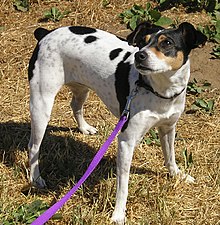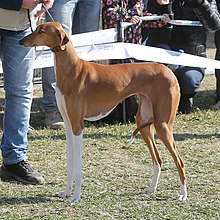
Originating from Central Africa, the Basenji is a breed shrouded in mystique and ancient allure. Often referred to as the “barkless dog,” the Basenji communicates through unique yodel-like sounds known as “baroos,” setting it apart from most other breeds. With its elegant, sleek physique, sharp ears, and expressive eyes, the Basenji exudes a sense of regality and poise. Beyond its distinct vocalizations, the breed is known for its keen hunting abilities, intelligence, and a cat-like demeanor, often grooming itself and displaying a curious mix of independence and affection.
The Basenji is a member of the AKC Hound Group.
Breed Characteristics
| Dog Breed | Basenji |
| Breed Popularity (AKC) | 91 |
| Country of Origin | Congo |
| Personality | Intelligent, energetic, playful, good-natured |
| Life Expectancy | 13-14 yrs |
| Height | 16-17 in |
| Weight | 22-24 lbs |
| Color | Red, Black & White |
| Coat | short and fine |
| Shedding | Occasional |
| Grooming | Occasional Bath/Brush |
| Health Problems | Dental problems, eye issues, skin allergies |
| Trainability | Independent |
| Exercise Needs | Energetic |
Basenji History
Hailing from Central Africa, the Basenji is one of the oldest breeds of domesticated dogs. Known as the ‘barkless dog’, the Basenji communicates through unique yodel-like sounds called ‘baroos’. They were used for hunting small game, guiding their handlers with their acute sense of sight and smell. Their distinctive curled tail and sleek appearance make them stand out.
Temperament
Basenjis, known as the ‘barkless dog’, have a unique yodel-like sound called a ‘barroo’. They are highly intelligent but can be somewhat independent, making training a challenge at times. Their behavior leans towards being curious and playful. They have a high energy level and require regular exercise. Socialization is crucial for them to be more adaptable to different environments. Their lack of typical barking does not mean they’re silent; they communicate in other unique ways.
Remember, while breed traits provide a general idea, individual dogs can have personalities that differ from the breed standard. Always spend time getting to know the dog and ensure their needs and temperament align with your lifestyle.
Grooming Requirements
The Basenji is known for its minimal shedding and self-cleaning behaviors, similar to cats. While they require fewer baths, using a gentle dog shampoo when bathing will ensure skin health. Weekly brushing helps remove any loose fur, and regular grooming tasks such as nail trimming and ear checking should not be overlooked.
Basenji Health
Basenjis, with a lifespan of 13-14 years, can face health issues like progressive retinal atrophy and hip dysplasia. Regular vaccinations, flea prevention, and deworming are essential. A well-balanced diet can aid in their health, and it’s important to watch for potential food allergies.
Exercise Needs
Basenjis, often considered cat-like in their behavior, have a moderate to high energy level and relish opportunities for play and exploration. Engaging in daily walks and offering a safe, enclosed space for off-leash play and exploration aids in keeping them physically active and mentally stimulated. Their curious and independent nature might mean they enjoy exploration more than interaction at a dog park, making leash training crucial for controlled walks.
Training
Known as the ‘barkless dog,’ the Basenji requires a unique approach to obedience training, given their independent temperament. Commands play an instrumental role in potty training, especially since they’re renowned for their cleanliness. Crate training offers a peaceful retreat for these curious canines. Addressing behavior problems early, especially their tendency to chew, is pivotal. Socialization, starting young, helps them integrate better with other pets.
Basenji Pictures
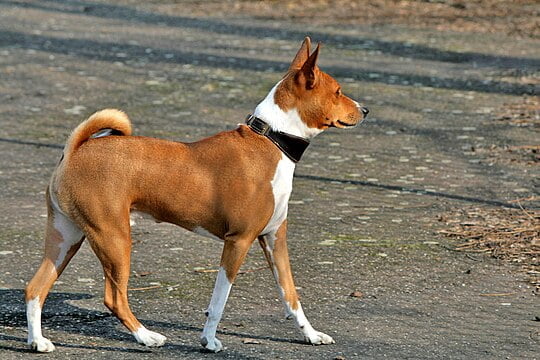
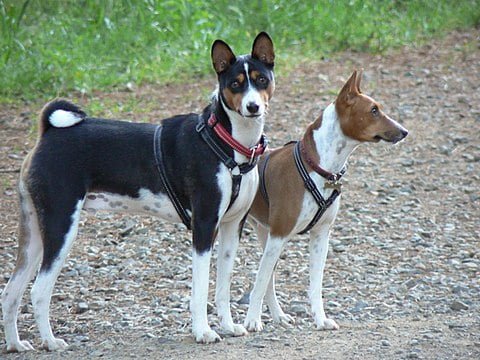
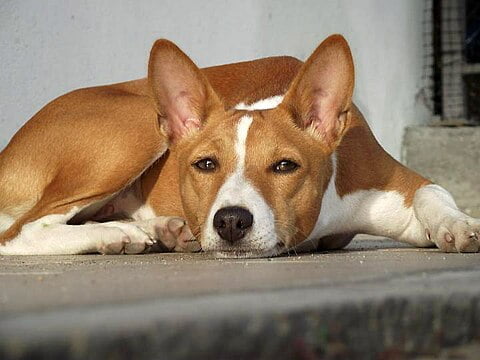
Related Dog Breeds
More Dog Resources
Are you thinking about getting a puppy? Make sure to check out our list of important questions to ask before you adopt a puppy.
We also have many resources to help, from naming your puppy to socialization resources and training tips.
Take me back to the Ultimate Guide to Dog Breeds

